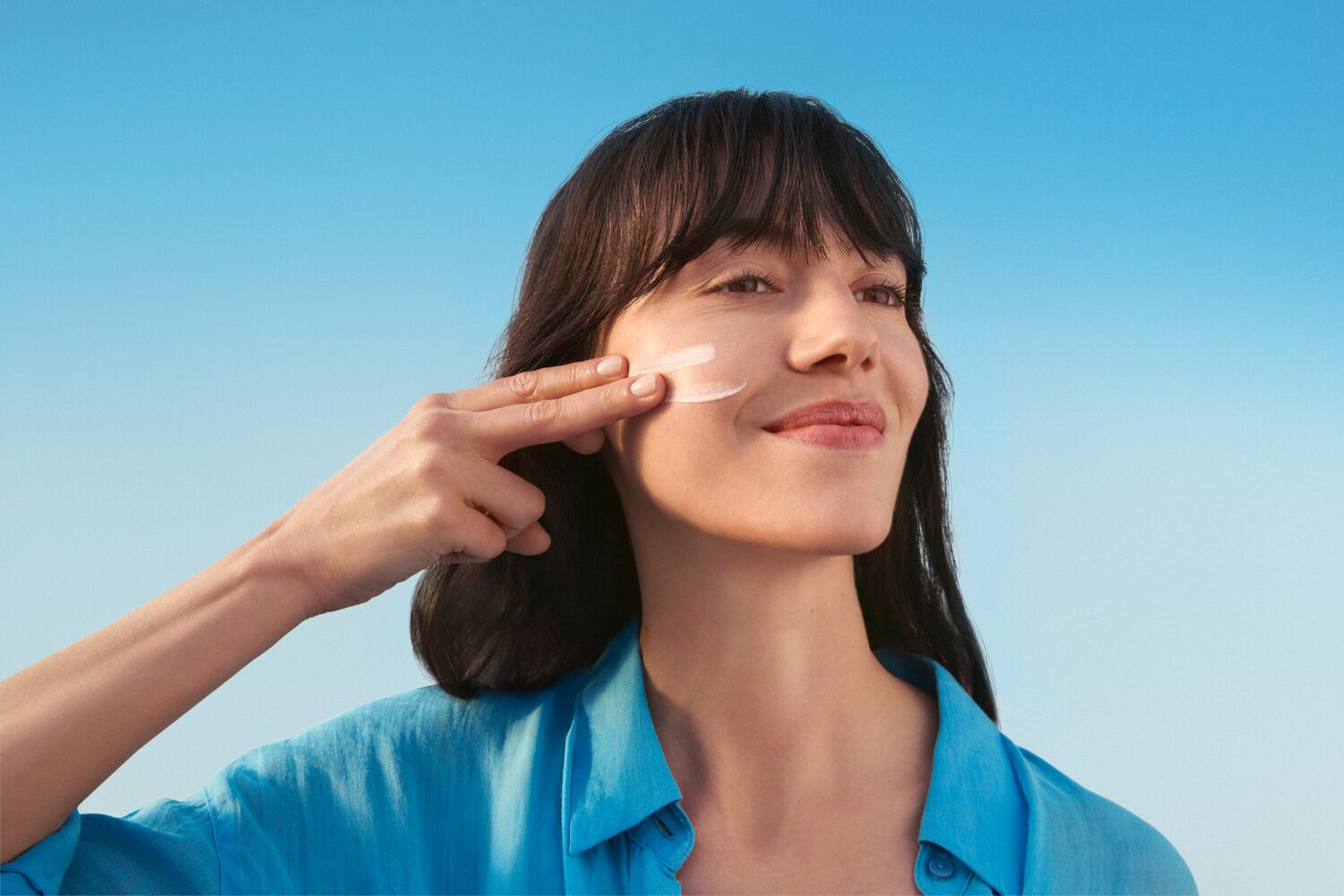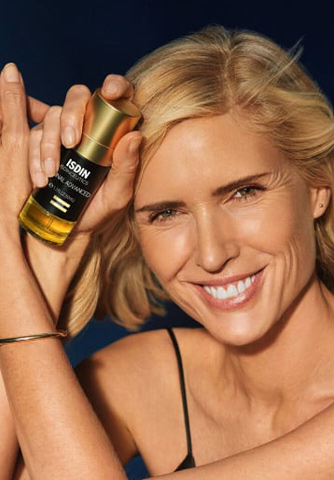Sunscreen: you know you should wear it—but are you applying it correctly? From how much to use to the perfect skincare routine order, we’re breaking down everything you need to know about how to apply sunscreen.
Whether you’re wondering, “Does sunscreen go on before or after moisturizer?” or “Should I wear sunscreen every day?”—we’ve got the answers with the help of a few friendly experts along the way. Let’s dive in.
Table of Contents
Why you should wear sunscreen every day
Yes, you should do your best to wear sunscreen every single day. Rain or shine. Indoors or outdoors. Even on cloudy days or while working near windows, your skin is exposed to UV rays that can cause premature aging, sun spots, and even skin cancer.
And here’s the thing: sun damage is cumulative. Each unprotected moment adds up. Wearing sunscreen every day helps protect your skin’s health and appearance—both now and in the future.
Wearing sunscreen every day results in:
- Lower risk of developing skin cancer
- Prevention of up to 80% of visible aging
- Protection against long-term sun damage, like fine lines and changes in pigmentation

Your skin remembers everything—protect it daily with SPF.
How much sunscreen to use on your face and body
One of the most common sunscreen mistakes? Not using enough. Applying too little means your product isn’t working as effectively as it should.
For your face:
Use the two-finger rule: squeeze sunscreen along the length of your index and middle fingers. That’s the recommended amount for full facial coverage.
Also, remember to reach your:
- Ears
- Neck
- Hairline
- Sides of the face
- Around the nose and eyes
- Scalp (if exposed)
For your body:
To start, aim for about 1 ounce (30 ml)—roughly the amount that fills a shot glass. All bodies are different—so use the amount that best covers all exposed skin areas when you’re wearing a swimsuit or summer outfit.

Pro tip: Always apply (and reapply) generously. Applying less than the recommended amount may lower your protection level.
Spray vs cream: what’s best?
Spray body sunscreens are convenient—but only if used correctly.
To apply spray sunscreen effectively:
- Hold the can about 4 inches (10 cm) from your skin
- Avoid your face to minimize inhalation
- Spray generously until a visible sheen appears
- Rub it in thoroughly to ensure even coverage
- Reapply regularly, just like with cream formulas
Remember, a quick mist isn’t enough. Always rub it in!
Choosing the right sunscreen for your skin
The best sunscreen is one that you actually enjoy wearing. Here’s how to choose smart:
- Sensitive or reactive skin? Look for non-comedogenic or mineral-based formulas (like Eryfotona Ageless).
- Dry skin? Hydrating sunscreens with ingredients like hyaluronic acid work best.
- Want an extra boost of protection? Opt for a sunscreen with antioxidants to help fight the effects of daily skin stressors, beyond just the sun.

When to apply sunscreen (and how often)
Apply sunscreen 15–30 minutes before sun exposure to give it time to settle in. Then reapply:
- At least every 2 hours
- Immediately after swimming, sweating, or towel drying
Carry a travel-size sunscreen in your bag for on-the-go reapplication.
Sunscreen before or after moisturizer?
Apply sunscreen after moisturizer. It should be the final step in your morning skincare routine.
Here’s the ideal order:
- Cleanser
- Eye cream
- Serums
- Moisturizer
- Sunscreen
- Makeup (if you wear it)
Why this matters: Your moisturizer helps seal in hydration, while sunscreen forms a protective shield. Applying sunscreen last ensures its UV-filtering ingredients can do their job properly.
Can you apply makeup over sunscreen?
Absolutely. Just wait 15 minutes after applying your SPF to let it dry, then move on to makeup. Some sunscreens even double as primers, hydrating the skin and creating a smooth base.
And remember to reapply even when you’re wearing makeup—with a few expert tips, it’s doable!
Check out how Samantha Randazzo applies her (flawless) makeup after sunscreen. Her favorite thing about ISDIN Fusion Water MAGIC SPF 40? “It works so well under my makeup.”
Protect your skin, love your skin
From lightweight textures to antioxidant-rich blends, there’s a sunscreen made to fit your lifestyle. So whether you’re heading to the beach, the office, or just running errands, take a moment to protect your skin—it remembers everything.
On that note, we’ll leave you with a few final sun protection tips to keep in mind:
- Reapply every 2 hours—even with high SPF
- Use sunscreen all year round, not just in summer
- Check the expiration date and toss any expired sunscreens
- Complement sunscreen with protective accessories: sunglasses, hats, and UPF clothing
Because caring for your skin today is the best gift you can give it for the future.

Behind the blog:
Article written and reviewed by:
Our namesake embodies the spirit of embracing life and all its wonder. As wellness journalists, we explore topics that invigorate the senses and keep curiosity alive. We believe that glowing skin is the result of a healthy body and mind. Weaving beauty with science, we aim to inspire you to live young at every age.










